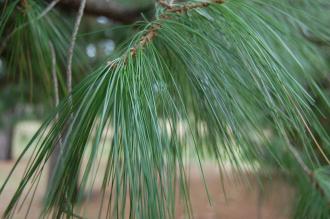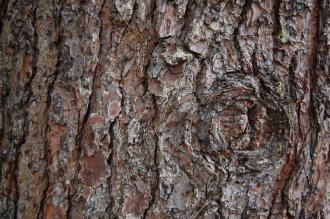
Pinus ayacahuite leaf (18/02/2012, Kew, London)
Position: Full sun
Flowering period: Late spring
Soil: Moist, well drained
Eventual Height: 35m
Eventual Spread: 10m
Hardiness: 5a – 10b
Family: Pinaceae
Pinus ayacahuite is a large evergreen tree with a conical crown. Its leaves are the typical pinus needles, arranged in bundles of 5, with a deciduous sheath and are up to 18cm long. Its branches are long, slender and spread horizontally, its lower branches often droop. On young trees its bark is thin, smooth, and ash-grey, as the tree matures it becomes rough and gray-brown. Its trunk is straight and may achieve a diameter of up to 1m. Its orange/ brown pollen cones are found at the ends of new shoots. Its seed cones are found near the ends of the branches, are up to 40cm long, 6cm broad when closed and 10cm when open.

Pinus ayacahuite (18/02/2012, Kew, London)
Pinus ayacahuite, commonly known as the Mexican White Pine or Ayacahuite, is native to southern Mexico to western Central America. In its native habitat it grows at elevations of between 1,500m to 3,600m in relatively cool moist locations.
The etymological root of the binomial name Pinus is the old classical name for ‘Pine tree’. Ayacahuite is derived from the common Spanish name for this tree.
The landscape architect may find Pinus ayacahuite useful as an attractive, elegant large specimen tree. Once established this tree is drought tolerant
Ecologically, P. ayacahuite provides little benefit to UK wildlife.
P. ayacahuite prefers moist, well-drained soils. It tolerates most pH of soil. It will not tolerate water logging.

Pinus ayacahuite bark (18/02/2012, Kew, London)
P. ayacahuite requires little maintenance.
Advertisement
